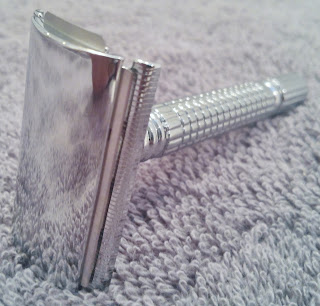- A soft-sided carry-on bag suitable for international travel, which is no bigger than about 21.5 x 14 x 9 inches (that's about 55 x 36 x 23 cm). (By the way, I don't use a bag with wheels. Instead I use a carry-on duffel, which is not only very light weight (less than three pounds) but holds an amazing amount of stuff and also converts to a backpack when desired. This is my overhead-compartment bag. If curious, see the link at the end of this article for more photos, details, user reviews and an informative VIDEO.)
- A small, light-weight backpack, briefcase, or messenger bag (all of which the airlines will consider to be a personal bag). This is the under-seat bag. [Update: By the way, my absolute favorite backpack is the Mountain Warehouse 20-liter pack-away backpack, which is incredibly light and can be folded into its own storage compartment for convenient stowing! See the link below for more information.]
- On my person; that is, anything that can be comfortably worn or carried in my pockets

Also, I hate to travel heavy, so I not only pack for low volume, I also pack for low weight. I adhere to the old backpacking maxim that if one pays attention to the ounces, the pounds take care of themselves. (In metric terms, that might be if one pays attention to the grams, the kilograms will take care of themselves.) That means, for example, that I wouldn't use a traditional Dopp-kit bag, but would instead pack all my toiletry gear into a clear, plastic freezer bag of the appropriate size.
The photo at left shows three (of many) travel-razor options. The traditionally-sized Merkur 15C weighs 1.8 ounces (52 grams). The vintage Gillette Travel Tech, with its steel handle, weighs 1.4 ounces (41 grams). And the Gillette twin-bladed, pivoting-head disposable, with the handle cut to half size (I cut it off with a hand saw and then used a file to remove any rough edges), weighs 0.1 ounces (less than 4 grams)!
In addition to being small and incredibly light, the disposable cartridge-style razor brings other advantages. First of all, unlike DE razor blades, you can pack these cartridge-style razors in your carry-on luggage. This means I don't have to shop at my destination for suitable DE blades (which could be hard to find), and I don't have to mail myself blades in advance of my departure. Secondly, these razors offer a low-risk shave, so it is comfortable to shave with just water and bath or hand soap as a lubricant, and the soap can be applied with one's hands, so no shaving brush is necessary. If one packs a small chunk of shave soap, it, too, can be rubbed on and "lathered" with one's hands, and the experience is enhanced by this small luxury. I do not pack styptic pencil, alum block, or even after-shave lotions and balms because the shave is so low risk and low irritation. If I want some after-shave product to smell freshly shaved, I will purchase that at my destination.
These twin-bladed disposable razors can provide an excellent shave. Despite being of mild shave character, properly used they shave great. So by applying the skills and knowledge of DE shaving to the use of my twin-blade disposable travel razor, I consistently get shaves as good as some of my best DE shaves.
The technique I've found to be great is using my previously-explained regional-shave process. This means that after you've wet your beard well and lathered up with some bath or shaving soap, shave a region of your beard using long, oblique buffing strokes with grain. Then as needed add soap from the underside of the razor and any needed water, and re-shave that same region (again with oblique buffing strokes) against grain. Continue to address that region if needed until desired closeness is achieved, then move on to the next region of your beard. Continue this process until you are clean shaven.
When the shave is done, rinse the razor thoroughly. I suggest shaking and blowing on the blades to remove clinging moisture. Then strop the exposed side of the razor's blades against one's arm or pants leg, and set to dry for the next shave.
If you think that removing half the handle to save so little weight is unnecessary, you may be right. However, if you choose to bring a second razor, by halving both handles, you are almost getting two razors for the weight of one. This makes the obsessive traveling shaver very happy indeed!
Happy shaving and traveling!The technique I've found to be great is using my previously-explained regional-shave process. This means that after you've wet your beard well and lathered up with some bath or shaving soap, shave a region of your beard using long, oblique buffing strokes with grain. Then as needed add soap from the underside of the razor and any needed water, and re-shave that same region (again with oblique buffing strokes) against grain. Continue to address that region if needed until desired closeness is achieved, then move on to the next region of your beard. Continue this process until you are clean shaven.
When the shave is done, rinse the razor thoroughly. I suggest shaking and blowing on the blades to remove clinging moisture. Then strop the exposed side of the razor's blades against one's arm or pants leg, and set to dry for the next shave.
If you think that removing half the handle to save so little weight is unnecessary, you may be right. However, if you choose to bring a second razor, by halving both handles, you are almost getting two razors for the weight of one. This makes the obsessive traveling shaver very happy indeed!



















